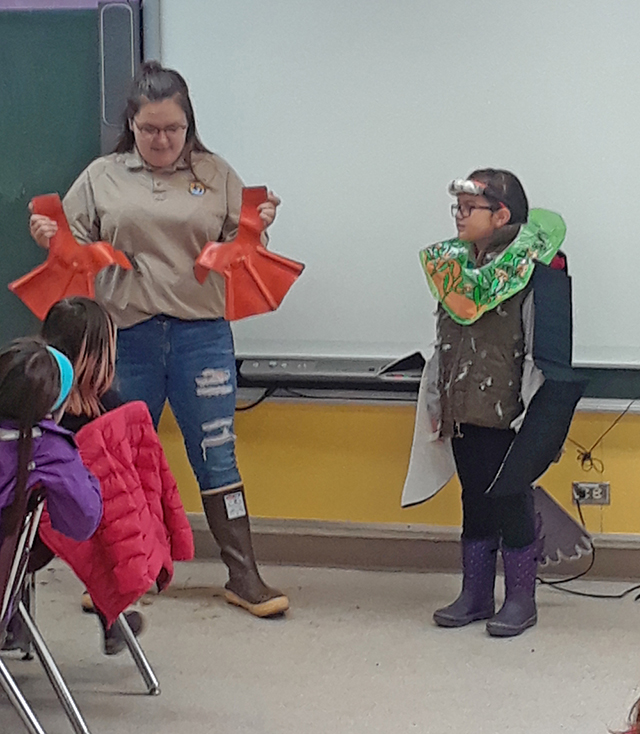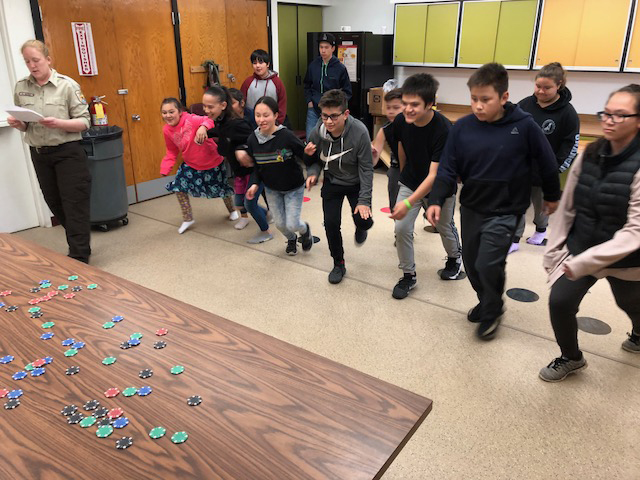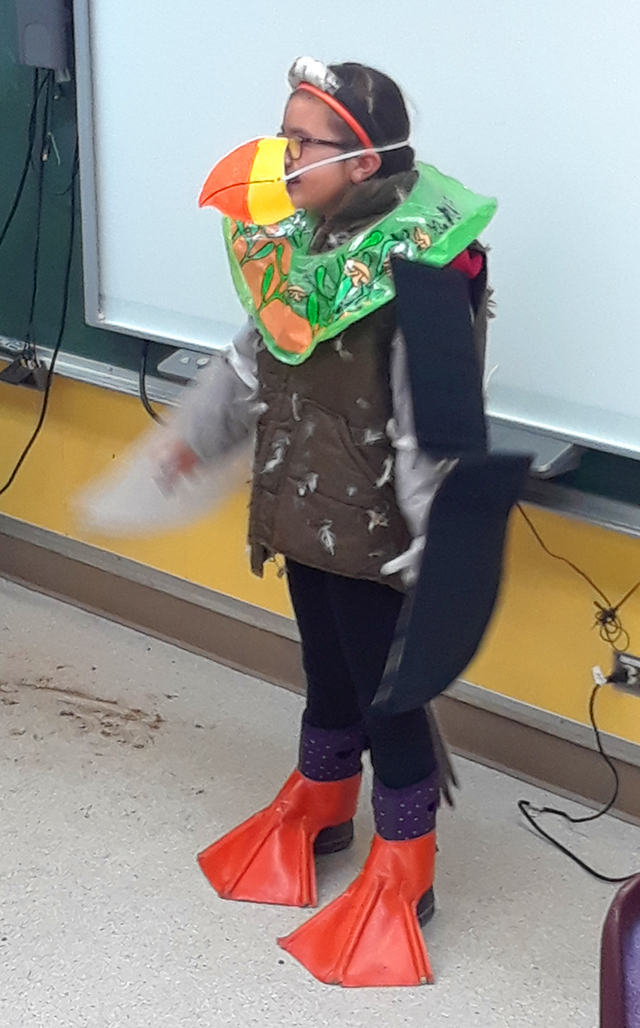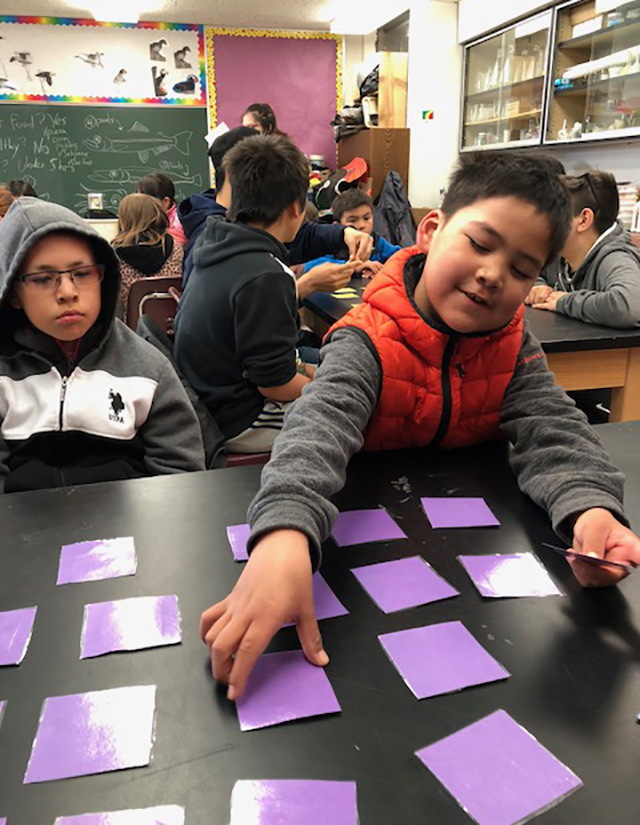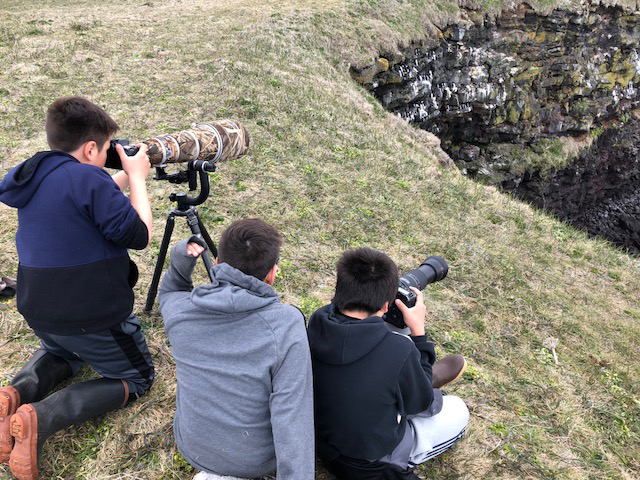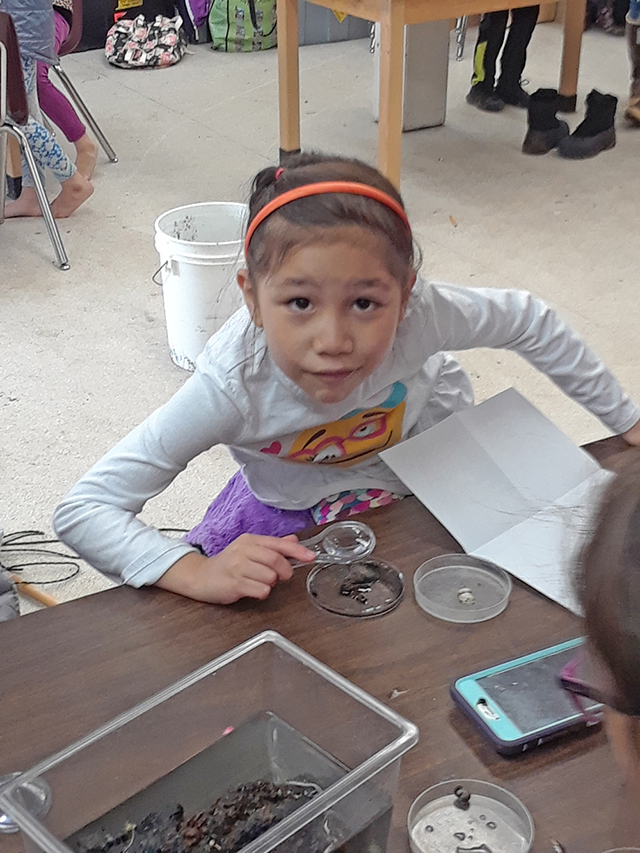After showing impressive memory skills in our seabird matching game, it was time for the older kids to go on their research field trips.
One group found two fox dens: one near town and the other miles away at Ridgewall seabird cliffs. They had several research questions and hypotheses. One experiment was designed to see if the foxes would eat human foods. The young scientists hypothesized that the town fox would take the human food but the out of town fox would not. A motion-capture camera was angles just right to determine what “natural” foods the fox would bring back to the den and how often it would visit. The students guessed that the fox would visit the den once per day and bring back seabirds, seals, fish and leftovers.
The other group headed toward High Bluffs where they studied biodiversity. After setting up several plots they found bird diversity varied somewhat over different stretches of cliff.
Back at the classroom we started to work on rather elaborate pop-up cards that will feature local cliffs popping from the center with a variety off seabirds on them.
After a discussion of climate change it was time to play the Kittiwake Survival Game. Students were divided into Red-legged and Black-legged Kittiwakes and learned how specialists are more vulnerable to climate change than generalists.
We heard a reading of “Trouble in the Arctic,” a somewhat silly play that deals with the serious subject of difficult changes to the polar regions.
Seabird Camp for the younger students started out with a lesson about seabird adaptations led by Sonia, one of our YCC Interns. She led a discussion about the adaptations seabirds have (like feathers, webbed feet, salt & oil glands) while dressing up Macey as a “seabird”.
After this lesson we talked about what and how the various seabirds eat and watched a cool YouTube video on gannets plunge diving to feed. Next, we took a nice walk to the Salt Lagoon to try to catch some small fish/ plankton, see what species of invertebrates were attached to the rocks in the intertidal zone, and to dig for worms in the mud exposed by low tide. It was a messy, but fun adventure. We were able to take the specimens back to the school science room and look at them under magnifying glasses and microscopes.
The older group ended the day by looking at the younger kids’ collections from Salt Lagoon.

